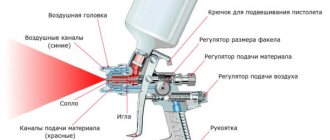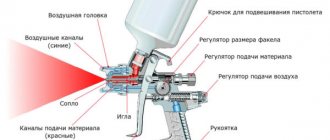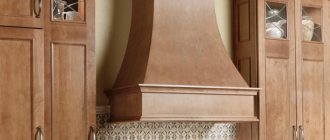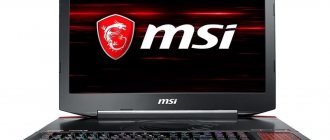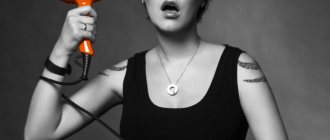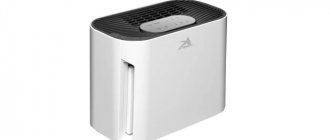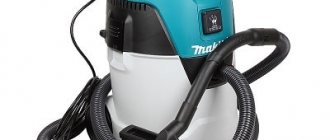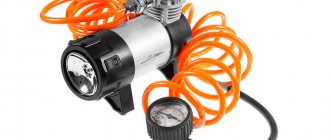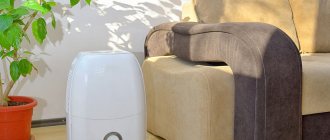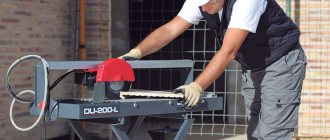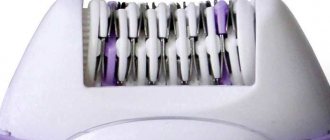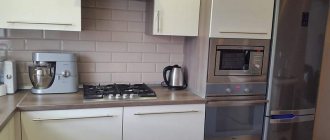Not only professionals have the opportunity to use a spray gun: for regular painting around the house, it will also be the best solution - only with it can you achieve a truly uniform application of paint. Its action is based on a simple principle - it sprays paint under pressure, and due to the fact that it is sprayed into small particles, the surface will be even and smooth. To choose a decent spray gun, read our buyer's guide and independent rating of the 8 best spray guns.
- Spray Guns: Buyer's Guide
- What to look for when choosing a spray gun
- Top products
- FAQ
Spray Guns: Buyer's Guide
Which spray gun is better?
To determine this, you should first find out what types there are, as well as find out basic information about popular manufacturers. After this, you can select several of the most suitable models and compare them according to important characteristics - this will help you decide.
How are spray guns different?
First of all, it is important to distinguish these devices by type (the operating pressure and consumed air volume will depend on this) and drive. We will look further into what varieties there are, but we note here that it is at this stage that the most important choice will need to be made. Further details, but not so small. You will need to decide on your preferred manufacturer, as well as a number of parameters, such as power and type of pump.
The best manufacturers of spray guns
Among them there are several leading ones: SATA, Wagner, Bosch and Walcom. There are a number of other companies that produce spray guns - Ryobi, Wester, Hammer, from the domestic "Kraton" and "Zubr" and "Kraton". They are inferior to the leaders in popularity, and often in the manufacturability of products, but they also have interesting models in their arsenal.
Preparing the Spray Gun
The spray gun is equipped with a step power switch. The presence of this option makes it possible to regulate the pressure and width of the torch, choosing the most suitable mode in which the varnish will lie evenly on the surface without excessive splashing.
The switch in position “0” indicates that the spray gun is on. If you set the switch to “1”, the device operates at medium speed, allowing you to spray even the most liquid varnishes. Mode “2” means that the device is capable of spraying viscous compounds.
Important! Before use, the spray gun must be configured.
This is done as follows:
- We hang the spray bottle in a vertical position above a test sheet of cardboard or wood at a distance of 15-20 centimeters.
- We press the trigger and hold it until streaks appear on the varnish stain.
- Next, we adjust the settings in accordance with our goals.
- We turn the nozzle so that the torch resembles a fan.
- We practice applying continuous strips of varnish, overlapping in different directions.
- To create a uniform coating, move the jet at the same speed. All movements are smooth, without jerking.
- We press the trigger at the edge of the surface to be treated, but not before it begins.
- The spray gun must not be tilted.
What to look for when choosing a spray gun
Let's look at the main parameters that you should focus on when choosing, in addition to the manufacturing company: after all, the brand is not everything; it is also important that the device has characteristics sufficient to perform the tasks that will be assigned to it in the household. Accordingly, the main selection criteria and required characteristics may be different.
Type
Based on the volume of air consumed and pressure during operation, the following types are distinguished:
- HP – this type belongs to the budget price segment and is used less and less. The pressure during operation could previously reach up to 6 bar, in modern devices it is usually 2-4. The main disadvantage is that 40-50% of the paint gets onto the surface to be painted, the rest is wasted, and even pollutes the air.
- HVLP - the pressure in devices of this type reaches 0.7-1 bar, due to which about 60-70% of the paint is used for its intended purpose.
- LVLP - this type is distinguished by even higher paint efficiency, up to 80%, and consumes little air during operation, which reduces the requirements for compressor performance.
Power type
Based on this parameter, mains-powered and battery-powered spray guns are distinguished. The latter have power limitations and are more expensive, but in some cases the disadvantages are overcome by the ability to work without a power grid. This allows you to work in hard-to-reach areas without electricity, and simply increases mobility
Power
Among electric spray guns, models with a power of less than 500 W are classified as household-class devices, while more powerful ones are classified as professional. Pneumatic ones are on average more powerful - standard models are designed for 1,000 - 1,800 W, in some cases the power can reach up to 3,000 W.
Pump type
There are electrical and pneumatic devices. In the first, pressure is created only by a pump, in the second, compressed air is used - and therefore a compressor is needed. As a result, electric devices are simpler and more compact, but the result of their work is not as good as that of advanced pneumatic ones, since the paint does not crush as much without the use of compressed air.
Tank volume
For a home spray gun, a receiver with a volume of 0.5-1 liter is sufficient. If you need a truly powerful professional-level device, then the volume should be higher - up to 5-10 liters. However, the required volume depends on the tasks that will need to be solved with the help of a spray gun, and in many cases it is not critical even if the tank is designed for a small volume - it just means that you will have to stop periodically to add liquid. Accordingly, if a spray gun is used for short-term painting, this will not be a problem at all.
The placement of the tank may also differ: the preferred design is one in which it is placed on top. This is due to the fact that in this case, its own weight also helps to pump the paint, which means the engine is less loaded.
Additional options
Don’t forget about other nuances – even if they are less important, they can also play a role. For example, the weight of the spray gun. You will have to hold it in your hands for a long time, and the lighter it is, the easier it is to do this. Or the material of the tank - if it is made of metal, then it will be easier to wash than plastic. In addition, the latter is less durable - over time it begins to dry out due to the solvents contained in the paint. To be able to paint different surfaces, the paint pattern needs to be adjusted - and so on, there are many other details to consider.
Features of wood varnishing
The use of opaque paints and varnishes implies maintaining the appearance of a natural texture. Very often, such varnishes are used for varnishing expensive wood varieties, for example, oak. Due to its high density, oak will absorb the composition, but the wood texture will not be masked, but rather accentuated. A popular finish would be “gray oak.” The technique for creating this surface consists of certain stages. First, the wood is protected, and then a primer and white paint are applied to it. After this, it is important to sand the surface down to bare wood, but even after removing the paint, there are residues in the soft layers in the form of veins, due to which the desired effect will appear after applying the varnish.
Top products
Now you know by what parameters you should evaluate the spray gun. To make your choice even easier, we've selected the best products in three categories - electric spray guns, entry-level pneumatic, and advanced pneumatic. At the same time, the price-quality ratio was assessed, user reviews and the parameters of the spray guns were taken into account - and each of the selected models is doing well with the above.
The best professional pneumatic spray guns
Anest Iwata W-400 Bellaria
A much more accurate tool than the previous ones discussed - it will suit even the most demanding professionals, and the paint applied with its help will lie perfectly flat. And to achieve such a result, no additional skills are required. But the cost of the device is high: 16,000 – 21,000 rubles.
Air consumption is 270 l/min, the tank is designed for 600 ml, the total weight of the device is only 380 g. Nozzle diameter is from 1.2 to 2 mm. The main advantage of the model is the BA 4-2 air cap, which provides increased performance at standard pressure. With this spray gun you can also apply water-soluble paints, you just need to change the head to WBX.
Price: ₽ 18,000
JONNESWAY JA-6111K
Another expensive professional tool - costs from 15,000 to 20,000 rubles. Provides high-quality painting and uses materials efficiently. Air flow is 396 l/min, the tank is designed for 600 ml, operating pressure is 3-3.5 bar. You can apply varnishes, paints, primers and enamels using the device. The nozzle diameter is adjustable, the maximum is 1.4 mm. Spray gun weight 700 g.
The kit includes: an air gun, two reservoirs (in addition to the main one, there is also a small one, 250 ml), replaceable nozzles, an air adapter, a special kit for adjustment and repair, and another one for servicing the tool. For ease of carrying, the kit also includes a plastic case.
Price: RUB 16,180
The best electric spray guns
Bosch PFS 2000
The model is designed for ordinary household work - the characteristics are quite sufficient for their implementation. Noise level – 79 dB, vibration – 2.5 m/s², tank volume is 0.8 l. The device power is 440 W, the material application speed reaches 2 m²/min, and it is possible to regulate its supply.
Hose length – 130 cm, two additional nozzles included. The nozzle has three-stage adjustment. The weight of the spray gun is 2 kg. These characteristics make it a simple and convenient device; it copes well with its intended purpose - painting walls, gates, varnishing furniture. Easy to clean and wash. The cost is 4,800 - 5,200 rubles, the manufacturer provides a two-year guarantee. Disadvantages - the paint does not always apply neatly, and in some cases you have to work with a roller.
Price: RUB 5,026
"Zubr" KPE-500
The model from a domestic manufacturer is characterized by good power for its cost (2,300 - 2,900 rubles) - it reaches 500 W. The receiver volume is 0.8 l, there is a viscometer. Vertical, horizontal and circular spraying is supported, and flow adjustment is available up to 0.8 l/min.
The weight of the device is only 1,500 g, and the kit includes a glass for measuring viscosity. Built-in pump. Overall, this is a simple and reliable device; the spraying result with it will not be perfect, but it is well suited for simple work. It is important that the manufacturer provides a 5-year warranty.
Price: RUB 3,290
RedVerg RD-PS18V
The device from RedVerg stands out for its moderate price (about 2,500 rubles) with good characteristics and the ability to operate on battery power. Although it is worth emphasizing that it is not included with the spray gun, nor is the charger - they will need to be purchased separately.
The weight of the device is quite small - 1,400 g. Of course, for the sake of compactness, we had to sacrifice some characteristics: in particular, the tank volume is not enough - it is only 600 g. It is possible to adjust the material flow to 0.4 l/min, the device is equipped with a viscometer, and the package also includes a special needle for cleaning the nozzle.
This spray gun cannot be used to spray acidic, alkaline, emulsion paints or materials with a flash point below 55 degrees.
Price: RUB 2,393
The best entry-level pneumatic spray guns
Matrix 57315
An inexpensive home appliance that uses legacy HP spray technology. Of course, this is fraught with large losses of paint, but it will cost 700 - 1,200 rubles. If you need to paint a lot, it is better to turn to more expensive models, but for irregular painting of small surfaces, this one is enough.
It can be used to apply paint or varnish, as well as liquid rubber, protective agents or disinfectants. The device has small dimensions and its weight is only 760 g. The capacity of the aluminum tank is 1 liter, air flow during operation is from 75 to 230 l/min. Includes two additional nozzles.
Price: ₽ 1,220
Wester KP-10
This is a more serious model, but it also costs several times more – 2,100 – 2,500 rubles. Although the device still cannot be called expensive, especially since its manufacturer is widely known, so there is no need to worry about reliability.
The main advantage is the ability to finely adjust pressure, material supply, spray width, jet shape, and nozzle diameter. This allows you to apply paint equally successfully to different surfaces. Equipped with a 5L nylon receiver, which is enough to perform basic tasks around the house. Air consumption – 165-260 l. The spray gun weighs 1.4 kg.
Price: ₽ 2,300
"Zubr" Profi Pro 150 Mini
A miniature spray gun designed for small-scale work. The volume of its tank is only 125 ml, and the weight in the package is 360 g. Air consumption – 100-145 l/min. The price of the device is from 1,200 to 1,900 rubles, and the warranty is given for 5 years.
HVLP spraying system – about 70% of the sprayed paint is transferred to the surface, which is a very good indicator for a model of such a low cost. Paint and varnish materials are distributed evenly over the surface. Adjustment of inlet pressure and torch shape is available. Based on the sum of its characteristics, this model is one of the best for small jobs, and at the same time it is very inexpensive.
Price: ₽ 1,860
Comparison table of the best spray guns
| Name | Main characteristics | Price |
| Bosch PFS 2000 | Noise level – 79 dB, vibration – 2.5 m/s², tank volume is 0.8 l, device power is 440 W, material application speed reaches 2 m²/min, it is possible to regulate its supply. | ₽ 5 026 |
| RedVerg RD-PS18V | The weight of the device is 1,400 g, the volume of the tank is only 600 g, it is possible to adjust the material supply to 0.4 l/min, the device is equipped with a viscometer. | ₽ 2 393 |
| "Zubr" KPE-500 | The power reaches 500 W, the receiver volume is 0.8 l, there is a viscometer, vertical, horizontal and circular spraying is supported, and flow adjustment is available up to 0.8 l/min. | ₽ 2 840 |
| Matrix 57315 | The device has small dimensions, weight only 760 g, capacity of the aluminum tank is 1 liter, air flow during operation is from 75 to 230 l/min. | ₽ 1 220 |
| Wester KP-10 | There is the possibility of fine adjustment of pressure, material supply, spray width, jet shape, nozzle diameter, air flow - 165-260 l, weighs 1.4 kg. | ₽ 2 300 |
| "Zubr" Profi Pro 150 Mini | The volume of its tank is only 125 ml, and the weight in the package is 360 g. Air consumption – 100-145 l/min. | ₽ 1 860 |
| Anest Iwata W-400 Bellaria | Air consumption is 270 l/min, the tank is designed for 600 ml, the total weight of the device is only 380 g, the nozzle diameter is from 1.2 to 2 mm. | ₽ 18 000 |
| JONNESWAY JA-6111K | The air flow is 396 l/min, the tank is designed for 600 ml, the working pressure is 3-3.5 bar, the weight is 700 g. | ₽ 16 180 |
The most powerful model
WAGNER ProSpray 3.21 Airless
W 950 Flexio
- (Germany);
- Power – 1030 W (1.03 kW);
- Maximum paint viscosity is not regulated;
- Capacity – 2 l/min;
- The capacity of the container is absent.
| Advantages | Flaws |
|
|
Area of application: professional interior and exterior painting work.
The purchase of such a powerful painting installation will cost 145,000 rubles.
FAQ
How effective is a spray gun made from a vacuum cleaner? In times when spray guns were not common, vacuum cleaners were often used instead. You can do this now - but to do this you need to spend time “re-equipping” the vacuum cleaner, and the result may not be very good. Considering the low cost of the simplest spray guns, it is more advisable to use them.
What is the difference between a spray gun and a spray gun? Only the tools used for applying paint and varnish are called spray guns, while a spray gun is a more extensive concept.
Which spray gun is preferable for whitewashing with lime? You can choose any model, as with conventional painting.
